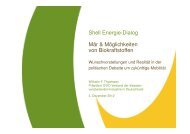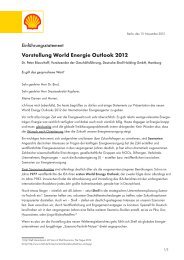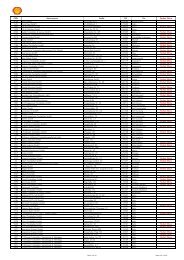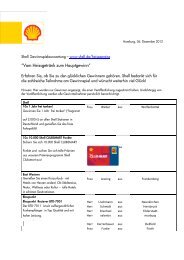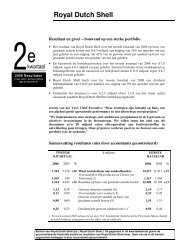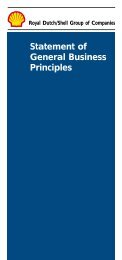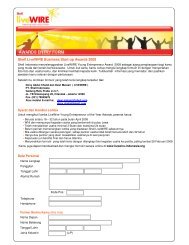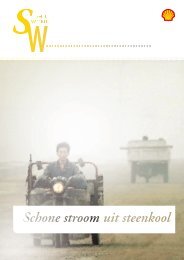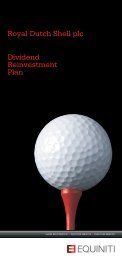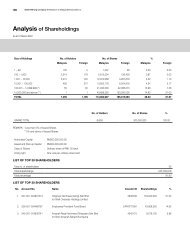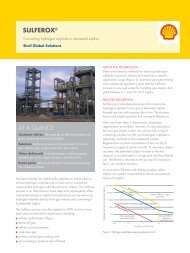ENVIRONMENTAL STATEMENT BARDOLINO DEVELOPMENT
ENVIRONMENTAL STATEMENT BARDOLINO DEVELOPMENT
ENVIRONMENTAL STATEMENT BARDOLINO DEVELOPMENT
You also want an ePaper? Increase the reach of your titles
YUMPU automatically turns print PDFs into web optimized ePapers that Google loves.
Bardolino Development Environmental Statement<br />
Jan Feb Mar Apr May Jun Jul Aug Sep Oct Nov Dec<br />
Cetaceans<br />
Several marine mammal species are present throughout the North Sea throughout the year. Killer and minke<br />
whales, white-beaked and white-sided dolphins, and harbour porpoises are widely distributed in the northern-central<br />
North Sea and may occur regularly in the vicinity of the proposed development. Long-finned pilot and sperm whales,<br />
and common, striped, Risso’s and bottlenose dolphins may also be seen occasionally within the area. The<br />
occurrence of most cetacean species is generally higher during summer months. Cetacean species present in the<br />
proposed development area are generally distributed throughout the North Sea.<br />
Marine mammals can potentially be impacted by noise, contaminants and discharges, oil spills, collisions with<br />
vessels and any effects on prey availability associated with oil and gas activities. Potential sources of acoustic<br />
disturbance from underwater noise generated during the proposed development include DP vessels, standby vessels<br />
and the installation of the pipeline and associated sub-sea structures.<br />
Seabirds<br />
Seabirds are vulnerable to oiling from surface oil pollution, which could cause direct toxicity through ingestion, and<br />
hypothermia as a result of the birds’ inability to waterproof their feathers. Certain birds, including guillemots,<br />
razorbills and puffins, are more vulnerable to oil spills in the moulting season, when they become flightless and<br />
spend a large amount of time on the water surface.<br />
Species commonly found in the offshore waters such as the proposed development area include fulmar, gannet,<br />
guillemot, razorbill, and kittiwake, and herring, great black-backed and lesser black-backed gull. In the proposed<br />
development area, the most sensitive times of the year is between July and November when seabird vulnerability to<br />
oil pollution is high. Vulnerability ranges from moderate to low for the remainder of the year. The overall seabird<br />
vulnerability to surface pollution in the area is moderate.<br />
Commercial Fishing Activity<br />
The relative value of fishing in the area of the proposed development is low. Demersal, pelagic and crustacean<br />
species are caught in the area. The total value of fish landed in the proposed development area (ICES 44F1 and<br />
43F1), was predominantly demersal species.<br />
The proposed development has the potential to interfere with fishing activities, for example as a result of exclusion<br />
zones. There is also the potential risk of the accidental snagging of fish nets on sub-sea structures associated with<br />
development.<br />
Shipping Activity<br />
Shipping traffic comprises 12 routes which pass within 10 nm of the proposed development with approximately 624<br />
vessels per year (equivalent to 1 to 2 vessels per day). Any shipping traffic in the area will consist mainly of fishing<br />
vessels, merchant vessels and offshore industry vessels.<br />
Key to Level of Sensitivity / Activity<br />
Very high<br />
High<br />
Moderate<br />
Low<br />
April 2008 Page 4-41


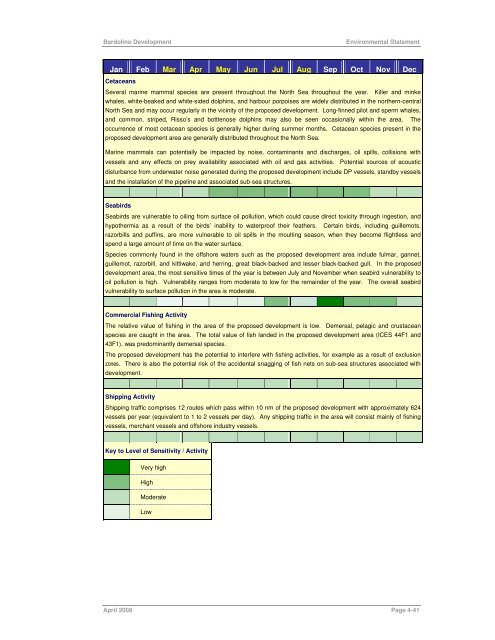
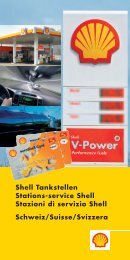
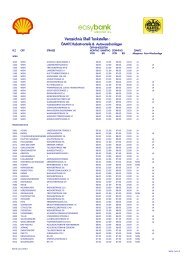
![Download Shell AutoGas Stationen [Stand: Januar 2013] (PDF](https://img.yumpu.com/9982753/1/190x245/download-shell-autogas-stationen-stand-januar-2013-pdf.jpg?quality=85)
